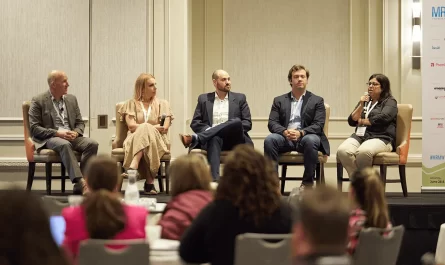In recent years, e-commerce has experienced a rapid surge in popularity due to the unparalleled convenience it brings shoppers as well as the ease and low cost of setting up and maintaining online shops. Other digital retail services such as price comparison and consumer review applications have also seen much use, heavily influencing shopping decisions through the information they provide.
However, the traditional “bricks-and-mortar” element remains a crucial part of today’s shopper experience. “Bricks-and-mortar” refers to the physical aspects of a retail company or business – for instance, a physical store or warehouse from which a retail company sells their products. Shoppers often want to see, feel and try out a product in person before buying it, which pure online retail services cannot offer them. A bricks-and-mortar retail experience also enables shoppers to interact with and get advice from knowledgeable sales associates in person.
It is hence unsurprising that prominent e-commerce companies such as Amazon, Warby Parker, Bonobos and Birchbox have, in recent years, extended their business into the offline world, setting up bricks-and-mortar outlets to augment their online businesses. For example, Bonobos, an American menswear retailer, launched ‘Guide Shops’ to enable customers to shop for clothes in person, receive an email with their fit and style preferences, and then purchase their items online at their own convenience. Extending their services into the real world allowed these companies to provide customers with the conveniences of online shopping in addition to the benefits of bricks-and-mortar retail.
Conversely, and quite commonly, bricks-and-mortar stores have also established online channels and integrated them into their business model. A prominent example is John Lewis, a chain of department stores in the UK. John Lewis implemented a service that allowed customers to order online and collect their items in-store, as well as a pure online service where customers could order online and have products directly delivered to their home. Numerous other examples of large retailers going online include Macy’s, Walmart and Target.
This mix of online and offline channels – whether it involves online commerce retailers extending their presence offline, or bricks-and-mortar retailers going online – constitutes the “Bricks-and-Clicks” model, or “omni-channel” shopper experience. Such an experience would ideally be composed of a seamless combination of online and offline channels to provide consumers with the flexible, convenient mix of shopping options they desire.
Eye tracking has been a popular research tool to uncover how real world shopper behaviours and decisions are affected by the immediate physical environment. Explicit research methods such as surveys and interviews – which involve the gathering of verbal feedback from participants – are commonly used to obtain feedback and opinions from consumers. However, eye tracking offers an additional layer of implicit insight and objective measurement that enables researchers to obtain more honest and accurate human data that does not rely on memory and is, furthermore, less affected by bias.
A large volume of work has also been done on digital channels, with numerous companies investing more in enhancing the user experience of their websites in an effort to keep customers coming back. Campbell’s Wholesale Reseller and Food Service Solutions in Australia is one such company, working with Objective Experience Australia to identify UX flaws on their online store. Consumer gaze behaviours observed through eye tracking during the shopping and transaction journey revealed distracting visual elements on the website that hindered shoppers’ ability to easily carry out online transactions. These elements were subsequently removed, creating a smoother and more pleasant online shopper journey.
Eye tracking could potentially be used in numerous other ways to gain further insight into what can be done to change and improve retail experiences, and could also potentially be integrated with virtual reality (VR). It is important to note, however, that eye tracking works best when combined with other research methods, such as interviews and surveys – interpretation of fixation data can be difficult and ambiguous otherwise. For instance, it may be unclear why a shopper fixated on a product, which may call for the shopper to provide a verbal account of why this product attracted their visual attention. Just as shoppers seem to prefer a flexible mix of shopping options, an adaptive, synergistic combination of shopper research methods appears essential for retail companies looking to venture into providing enjoyable and effective omni-channel shopper experiences.
Editors note: James will be speaking at the upcoming MRMW APAC conference on June 28-29 in Singapore. Join him and other experts talk about the latest technologies for market research.
By James Breeze, Georgina Ng and Ying Ki Lo
Edited from the original article, published with ACI Institute for Asian Consumer Insight










 by
by 

